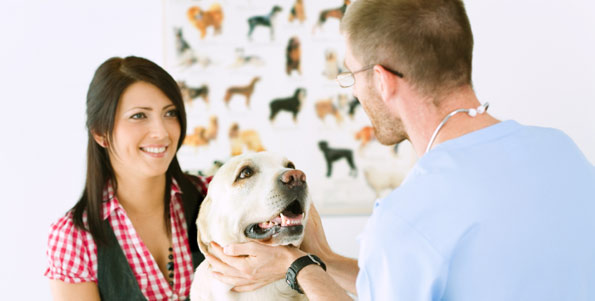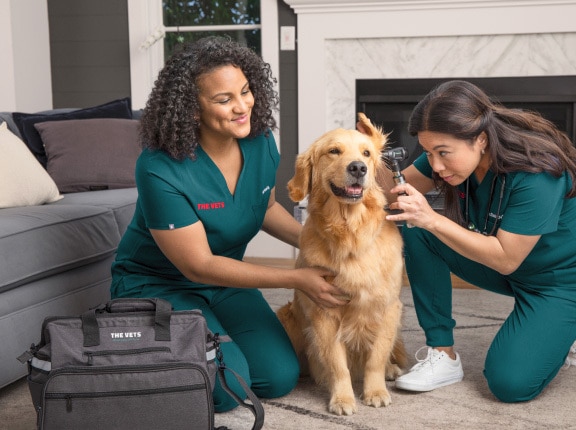What to Expect From Your Visit to animal emergency care bellingham — A Pet Owner’s Guide
What to Expect From Your Visit to animal emergency care bellingham — A Pet Owner’s Guide
Blog Article
All Concerning Vet Surgical Procedure: Comprehending the Relevance of Professional Treatment for Your Pets
Vet surgery is an essential part of animal health care. It includes various procedures, from regular elective surgical treatments to urgent treatments. Comprehending the ins and outs of these surgeries can help family pet proprietors make educated decisions. The preparation, implementation, and recovery phases are necessary for ensuring the wellness of animals. With correct understanding, proprietors can browse the complexities of vet treatment. What elements should be thought about prior to a family pet goes through surgery?
Sorts Of Vet Surgeries
When a pet calls for surgical treatment, recognizing the different kinds of vet surgeries can help family pet proprietors make informed choices. Veterinary surgical procedures can be extensively classified into 3 main kinds: elective, urgent, and emergency situation surgical treatments. Optional surgical treatments, such as spaying or neutering, are planned treatments that are not immediately life-threatening. Immediate surgical procedures, like those for foreign body elimination, need to be performed quickly but are not lethal in the minute. Emergency surgical procedures, such as those resolving extreme injury or internal bleeding, are essential and require instant attention.Additionally, surgical procedures can vary in complexity, varying from minimally intrusive laparoscopic procedures to a lot more extensive open surgical treatments. Each kind of surgical procedure lugs its very own threats and recovery procedures. Recognizing these categories enables pet dog owners to participate in significant conversations with vets, bring about much better end results for their beloved pets.
Planning for Your Pet dog's Surgery
Getting ready for an animal's surgery entails a detailed list to ensure all basics are covered. Efficient interaction with the vet is crucial for recognizing the procedure and any type of needed pre-operative actions - veterinary cardiologist near me. In addition, having clear post-operative care directions will certainly aid proprietors supply the very best assistance for their recuperating pet dogs
Pre-Surgery List Essentials
Guaranteeing a smooth medical experience for a pet calls for careful prep work and attention to information. A pre-surgery checklist is essential for pet dog owners to adhere to. Verifying the scheduled surgical treatment day and time is crucial. Proprietors must also verify that their family pet has not eaten according to the veterinarian's directions, commonly for 8-12 hours before surgery. Gathering required medical documents, including inoculation history, is necessary for the veterinarian's review. It is additionally suggested to prepare a comfy space in the house for the family pet's recuperation after surgery. Owners must have a plan for transport to and from the vet facility, making certain that the animal is safe and secure and comfortable throughout the journey. Complying with these actions can significantly enhance the surgical experience.
Interacting With Your Vet

Efficient communication with the veterinarian is necessary for a successful surgical experience for pets. Proprietors need to be prepared to review their family pet's clinical background, consisting of any kind of pre-existing problems, medications, and allergic reactions. This info helps the veterinarian assess risks and customize the medical plan as necessary. Additionally, pet dog owners ought to ask inquiries concerning the treatment, anesthesia, and anticipated end results to guarantee they fully understand the process. Clearing up any doubts can relieve stress and anxiety for both the animal and the owner. It is additionally vital to interact any kind of behavior modifications or worries observed in the pet dog leading up to the surgical procedure. Inevitably, clear discussion promotes trust fund and collaboration, guaranteeing that animals obtain the very best possible care throughout their medical trip.
Post-Operative Treatment Instructions
After discussing the surgical treatment with the vet, pet dog owners need to concentrate on post-operative care guidelines to help with a smooth recovery for their animals. These directions normally consist of keeping track of the medical website for indications of infection, such as redness or discharge. Pets might need to be kept calm and restricted to stop too much movement that might interfere with healing. Pain monitoring is important, so owners need to follow the veterinarian's assistance on providing medicines. Furthermore, nutritional limitations may be advised to prevent gastrointestinal distress. Routine follow-up appointments are necessary to assure proper healing and resolve any type of worries. By sticking to these post-operative care instructions, animal proprietors can substantially add to their pet's healing and overall health.
The Surgery Explained
The medical procedure for pets encompasses vital steps that ensure their safety and healing. Pre-surgery prep work are necessary for decreasing threats, while post-operative care guidelines play an essential duty in promoting healing. Understanding these parts helps pet dog proprietors browse the surgical experience more effectively.
Pre-Surgery Preparations
Before a family pet undergoes surgery, numerous essential prep work need to take location to ensure a risk-free and effective treatment. First, an extensive vet examination is necessary to examine the pet's total wellness and determine any potential threats. This may include blood examinations, imaging, or various other diagnostics. The veterinarian will certainly additionally go over anesthesia options tailored to the pet dog's specific requirements. Additionally, pet proprietors are commonly instructed to withhold food and water for a specified time prior to surgical procedure to minimize the threat of complications during anesthetic. It is essential for proprietors to give a total case history, consisting of any kind of medicines or allergies, making sure the medical team has more info all needed info. Correct communication and adherence to pre-surgery guidelines can considerably enhance the result of the treatment.
Post-Operative Treatment Guidelines
Proper post-operative care is vital for making certain a family pet's recuperation complying with surgical treatment. After the treatment, family pets ought to be checked closely for any indicators of issues, such as too much bleeding, swelling, or uncommon habits. It is essential to adhere to the veterinarian's instructions concerning drugs, including painkiller and antibiotics. Family pets ought to be maintained in a silent, comfy setting to reduce anxiety and promote healing. Restricting activity is crucial; short, leashed strolls may be required, however jumping or running should be prevented. Normal follow-up visits should be arranged to examine the healing process. Additionally, the surgical website needs to be maintained tidy and dry, with any signs of infection reported to a vet immediately. Following these standards boosts recovery results.
Anesthetic and Pain Administration
Efficient anesthetic and discomfort monitoring are crucial components of vet surgical procedure, ensuring that family pets continue to be comfortable and risk-free throughout the treatment. Vets examine each family pet's private needs, thinking about variables such as age, weight, health status, and the kind of surgery being performed.Anesthesia protocols usually consist of a mix of pre-anesthetic medicines, induction representatives, and inhalant anesthetics, enabling precise control over the pet's level of consciousness. Surveillance during surgical treatment is vital; veterinarians continually observe vital indicators to resolve any type of prospective complications promptly.Pain administration strategies might include opioids, non-steroidal anti-inflammatory medicines (NSAIDs), and anesthetics, customized to the pet dog's particular circumstance. This complex method assists decrease pain and promotes a smoother surgical experience. By focusing on reliable anesthetic and discomfort monitoring, veterinary specialists boost the overall welfare of pet dogs going through surgeries, ensuring they receive the greatest standard of treatment.
Post-Operative Treatment and Healing
Following surgery, the focus moves to post-operative treatment and recuperation, which is crucial for ensuring a family pet's risk-free return to normal activities. During this period, family pets require a silent, comfortable setting to help recovery. Owners need to closely monitor their pets for any type of signs of discomfort or unusual behavior.Veterinary guidelines typically consist of details guidelines associated with medicine management, wound care, and nutritional adjustments. It is vital to comply with these suggestions to decrease complications and promote recovery. Animals might require to be limited from energetic tasks, such as running or jumping, during their healing period (24 hour vet near me).Regular follow-up visits with the vet enable for surveillance of the family pet's progression and prompt modifications to the care plan. Providing emotional assistance and friendship can likewise improve a pet's recuperation experience, helping to relieve stress and anxiety and anxiousness. In general, persistent post-operative care plays a significant role in achieving a successful healing
Identifying Issues After Surgical Treatment
Exactly how can pet owners recognize problems after surgical procedure? Recognition of certain indications is essential for making sure the health of pets during recovery. Typical indications include extreme swelling, soreness, or discharge at the medical site, which might represent infection. Furthermore, persistent discomfort, suggested by yawping or unwillingness to move, need to trigger immediate attention. Modifications in appetite or water intake can additionally indicate problems; a decline in these behaviors might signal pain or distress.Moreover, pet dog proprietors ought to check their animals for any kind of uncommon behavior, such as lethargy or problem breathing, as these can be indications of major issues. Throwing up or diarrhea complying with surgical procedure may require urgent veterinary evaluation. Recognizing these complications early can substantially influence a pet dog's recovery procedure, highlighting the significance of alertness and prompt interaction with a vet for any kind of concerning signs and symptoms.
The Function of Vet Experts in Surgical Treatment
Vet specialists play an essential function in making sure the safety and success of procedures for animals, specifically following surgical procedure when monitoring and treatment are vital. These experts consist of veterinarians, veterinary service technicians, and support staff, all of whom contribute specialized skills to the surgical process.Before surgical procedure, veterinarians carry out thorough assessments to examine the pet dog's wellness, making certain that any type of underlying conditions are taken care of. Throughout the treatment, the medical team supplies anesthetic, keeps sterilized atmospheres, and monitors vital indications, very important for decreasing risks.Post-operative care is similarly significant; vet specialists observe for complications, manage discomfort, and overview owners on recovery techniques. Their proficiency allows them to identify early signs of distress or infection, ensuring prompt treatment. Ultimately, the collaborative initiatives of veterinary professionals in medical treatment promote a risk-free atmosphere, promoting the well-being of pet dogs throughout the medical journey.

Frequently Asked Concerns
How Do I Select the Right Vet Cosmetic Surgeon for My Animal?
Picking the right vet cosmetic surgeon entails investigating certifications, reading reviews, and reviewing the clinic's setting. It is vital to assess the doctor's experience with particular procedures and their communication style when choosing.
What Prevail Misconceptions About Veterinarian Surgeries?
Usual misconceptions regarding vet surgical procedures include beliefs that they are constantly dangerous, unnecessary, or for emergencies. Several animal owners take too lightly the benefits of precautionary treatments and the skill associated with vet medical treatment.
Just How Much Will My Pet's Surgical procedure Price?
The cost of a family pet's surgical treatment can differ significantly based upon aspects such as the kind of treatment, the vet's experience, and geographical area (veterinary cardiologist near me). Normally, expenditures range from a couple of hundred to several thousand bucks

Can My Pet Dog Eat Before Surgical Procedure?
Prior to surgery, it is normally recommended that family pets abstain from eating for a details duration. This fasting aids decrease the threat of complications during anesthesia. Proprietors must consult their vet for precise directions customized to their pet's needs.
What if My Animal Has Pre-Existing Health Conditions?
When a family pet has pre-existing wellness problems, it's essential for the veterinarian to analyze these aspects prior to surgery. This assessment warranties appropriate precautions are taken, reducing risks and enhancing the pet's overall safety and security during the procedure.
Report this page